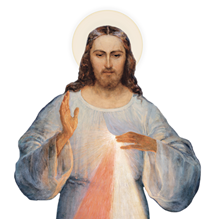
Saint Patrick overcame every obstacle, whether those were the spells and the curses of the druids, the hostility of the rulers of the land, or any hesitancy on the part of the people to turn to Jesus Christ, the Son of the Living God. He evangelized the length and breadth of the island, offering a tremendous model for us today as we strive to pursue the New Evangelization in the face of a new and darker paganism, a world all too often hostile to Christ and His Church, and a society riven by conspiracy theories, partisanship, and dark suspicions about the other side.
By Chris Sparks
When you think of St. Patrick’s Day, March 17, do you primarily recall that Chicago turns its river green, or do you think of green beer, or perhaps crème de menthe?
What about a bonfire burning bright against a night sky, with the soldiers of a high king rushing toward it to put it out, and a lone bishop standing there in the firelight, praying, awaiting Easter morning?
That’s St. Patrick. That’s the fifth-century apostle of Ireland, the man who made the island the land of saints and scholars, and that was a crucial turning point in his ministry.
Pagan fire
You see, it was the night of a pagan festival, Beltane, the night when all other fires were to be lit from the king’s fire. And Patrick decided to make a point. He lit the Easter fire, the fire of the King of Kings, and took the opportunity to proclaim the lordship of the carpenter’s Son from Nazareth, the Son of the Living God. And, as kings tend to do when Jesus seems to be a threat to their supremacy, the High King of Ireland sent his soldiers out to put out the Easter fire, the fire of the Light of the World.
His druids, it is said, told him that if Patrick’s bonfire burned the whole night through, then he would no longer be ruler of those lands.
They were right, in a way, and wrong in others.
Jesus doesn’t come to overthrow all earthly authorities, but to transform them, to renew them. He comes to make all men new, to sanctify those of us born and struggling here below, to draw us all into a new and eternal life and love. That has radical implications for the way the world works over the long haul, but in the short term, all sorts of political arrangements and structures of authority can be baptized and become Christian.
So Patrick’s fire burned the whole night through. Patrick had come back to Ireland to bring the Light of Christ. In his youth, he’d been taken prisoner, enslaved, and sold to an Irish master. Eventually, he’d made his escape, guided through faith and prayer. Once he’d regained his freedom, he went about becoming ordained a priest and bishop, and then set out to bring the Gospel to those who’d enslaved him.
Talk about love of enemy! Talk about love of neighbor!
Overcoming every obstacle
And St. Patrick overcame every obstacle, whether those were the spells and the curses of the druids, the hostility of the rulers of the land, or any hesitancy on the part of the people to turn to Jesus Christ, the Son of the Living God. He evangelized the length and breadth of the island, offering a tremendous model for us today as we strive to pursue the New Evangelization in the face of a new and darker paganism, a world all too often hostile to Christ and His Church, and a society riven by conspiracy theories, partisanship, and dark suspicions about the other side.
Saint Patrick, like St. Faustina, shows to us the infinite power of the Divine Mercy, and promises us, with the proof of his life and ministry, that no evil or earthly resistance is stronger than the Gospel. Like St. Faustina, St. Patrick worked wonders out of his love of God and neighbor, bringing grace wherever it was needed. And like St. Faustina, St. Patrick helped bring people to Jesus, the Divine Mercy, setting them on the path to helping to evangelize and reevangelize the entire world.
Summoned by the Saints
We are summoned by the saints, especially by St. Patrick and St. Faustina, to go and do like they did. We are challenged to proclaim the Divine Mercy message and devotion to the world, for as Pope Benedict XVI said, Divine Mercy is the nucleus of the Gospel. We are called to live “Jesus, I trust in You,” to forgive our enemies and bring them Good News of God’s great love for all of us. And we are called to overcome every power of darkness, every attack of the world, the flesh, and the devil with trust in the Trinity to be the light that shines in the darkness, and the darkness has not overcome it (see Jn 1:3-5).
Let me leave you with the tremendous prayer called “St. Patrick’s Breastplate.” Please pray for me; I’ll pray for you.
Saint Patrick, pray for us!
{shopmercy-ad}

















